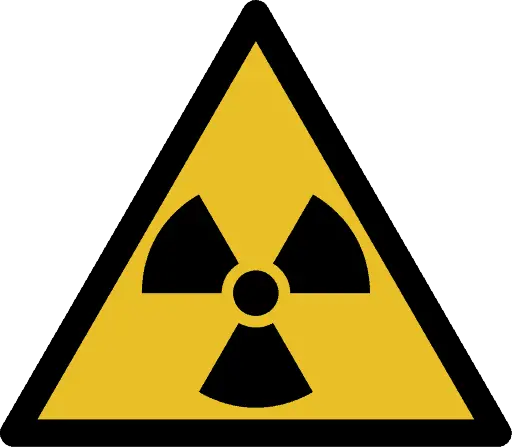In the case of free contamination (or loose contamination), the radioactive material can be spread. In the case of fixed contamination, the radioactive material cannot be spread, since it is chemically or mechanically bound to structures. Radiation Dosimetry

Surface Contamination
Surface contamination means that radioactive material has been deposited on surfaces (such as walls, floors). It may be loosely deposited, much like ordinary dust, or it may be quite firmly fixed by chemical reaction. This distinction is important, and we classify surface contamination on the basis of how easily it can be removed:
- Free Contamination. In the case of free contamination (or loose contamination), the radioactive material can be spread. This is surface contamination that can easily be removed with simple decontamination methods. For example, if dust particles containing various radioisotopes land on the person’s skin or garments, we can clean it up or remove clothes. Once a person has been decontaminated, all of the particulate radioactivity sources are eliminated, and the individual is no longer contaminated. Free contamination is also a more serious hazard than fixed contamination, because dust particles can become airborne and they can be easily ingested. This leads to an internal exposure by radioactive contaminants. Although almost all contaminants are beta radioactive with accompanying gamma emission, but there is also the possibility of alpha contamination in any nuclear fuel handling areas.
- Fixed Contamination. In the case of fixed contamination, the radioactive material cannot be spread, since it is chemically or mechanically bound to structures. It cannot be removed by normal cleaning methods. Fixed contamination is a less serious hazard than free contamination, it cannot be re-suspended or transferred to skin. Therefore the hazard is usually an external one only. On the other hand, it depends on the level of contamination. Although almost all contaminants are beta radioactive with accompanying gamma emission, but there is also the possibility of alpha contamination in any nuclear fuel handling areas. Unless the level of contamination is very severe, the gamma radiation dose rate will be small and external exposure will be significant only in contact with, or very close to, the contaminated surfaces. Since beta particles are less penetrating than gamma rays, the beta dose rate can be high only at contact. A value of 1 mSv/h at contact for a contamination level of 400 – 500 Bq/cm2 is fairly representative.
We hope, this article, Free Contamination and Fixed Contamination, helps you. If so, give us a like in the sidebar. Main purpose of this website is to help the public to learn some interesting and important information about radiation and dosimeters.